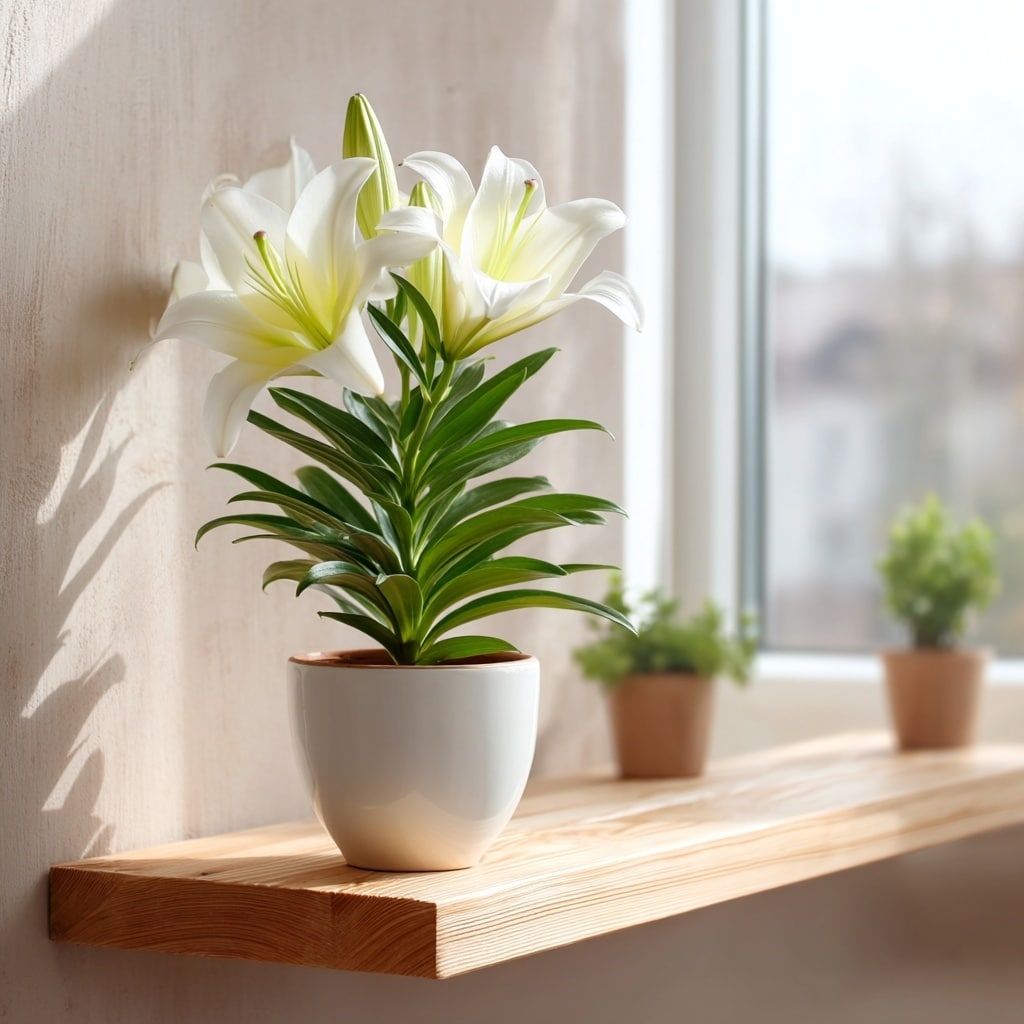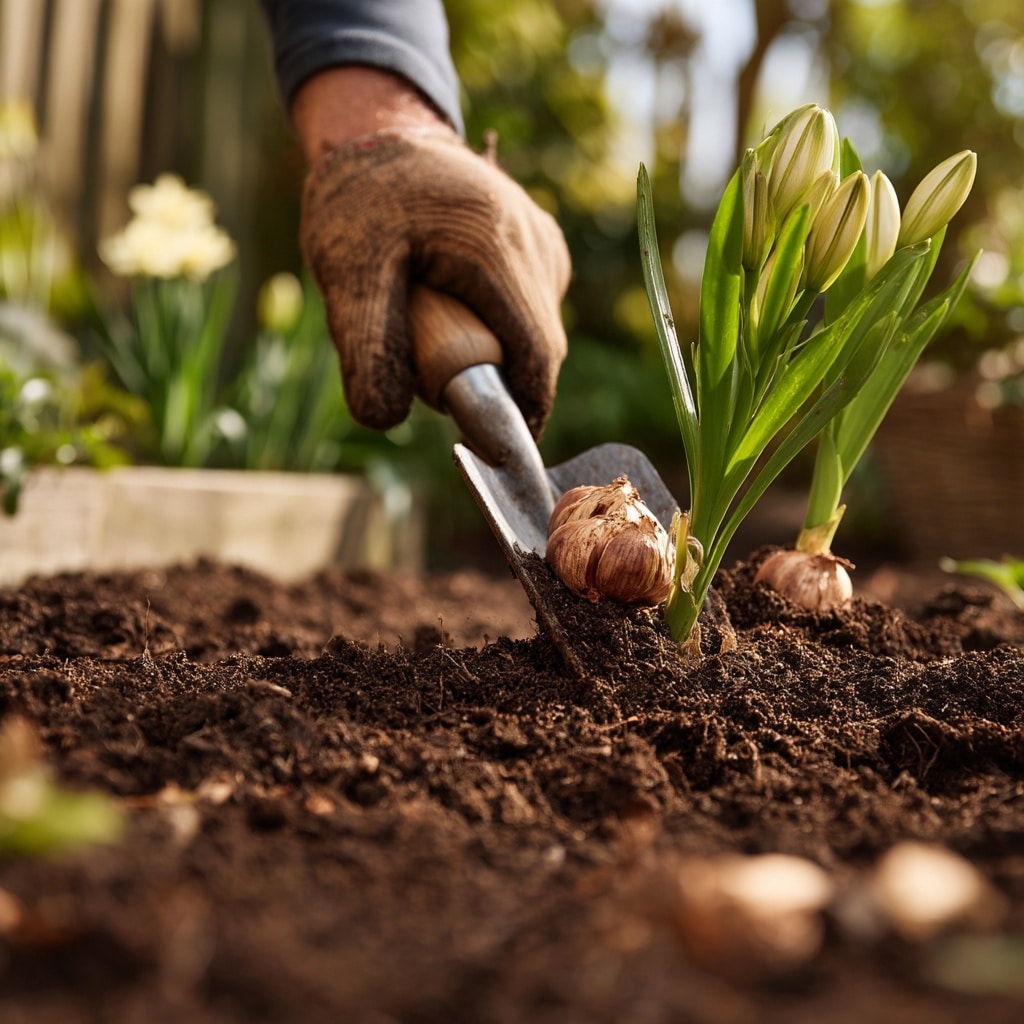Lily flowers are one of the most rewarding perennials you can grow, offering bold color, elegant shape, and sweet fragrance from early summer through fall. With their vibrant petals and upright stems, they make a dramatic statement in both garden beds and indoor containers. Whether you’re planting Asiatic varieties for their low-maintenance charm or fragrant Oriental lilies for show-stopping blooms, these flowers can brighten any space with the right care.
Even better? Lily flowers are surprisingly easy to grow and can return year after year when planted and maintained properly. From soil preparation to sunlight and watering needs, we’ll cover everything you need to help your lilies thrive season after season.
Table of Contents
Table of Contents
How and When to Plant Lilies
Planting lily flowers at the right time and in the right conditions is key to getting big, healthy blooms year after year. These perennials prefer well-drained, nutrient-rich soil that stays slightly moist without becoming soggy. If your soil tends to hold water, consider mixing in compost or sand to improve drainage before planting.
The best time to plant lily bulbs is either in early fall—at least four weeks before the first expected frost—or in early spring after the last frost has passed. This timing allows the bulbs to settle in and establish strong roots before the growing season begins.
When planting, dig a hole two to three times deeper than the bulb’s height. For example, a four-inch bulb should be planted about eight inches deep. Always place the bulb with the pointed side facing up.
Once your bulbs are in the ground, cover them with soil and a layer of organic mulch. Mulching helps retain moisture, suppress weeds, and protect the bulbs during colder months. It’s especially helpful if you live in a region with harsh winters and plan to overwinter your lily flowers outdoors.
Planting Lily Flowers Indoors

While lily flowers are often grown outdoors, certain varieties—especially Easter lilies—can thrive indoors with the right setup. Growing them in containers lets you enjoy their beauty year-round and gives you more control over their environment.
Choose a pot that matches the size of the plant, with proper drainage holes to prevent water from pooling at the bottom. A smaller lily variety works best indoors, as some outdoor types can grow up to eight feet tall and quickly outgrow their space.
Use a high-quality potting mix that drains well but retains enough moisture to keep the bulbs happy. Place the container in a bright spot where the lilies can receive at least six hours of indirect or direct sunlight per day. A south- or west-facing window usually works best.
Water regularly, but don’t overdo it. Let the top inch of soil dry out between waterings to avoid bulb rot. During the active growing season, a light, potassium-rich fertilizer every two weeks will help keep your indoor lily flowers blooming beautifully.
After the blooming period, let the plant go dormant. Store the bulbs in a cool, dry place for about eight weeks—an unheated garage or refrigerator works well. Just make sure the fridge doesn’t contain any fruit, as ethylene gas can interfere with next year’s blooms.
How to Care for Lily Flowers

Once your lily flowers are established, a little routine care will keep them blooming beautifully year after year. These plants may look delicate, but they’re surprisingly low-maintenance when given the right conditions.
Start by feeding your lilies with a potassium-rich fertilizer every two weeks during the growing season. Continue fertilizing until about a month after the final bloom to support healthy bulb development for next year. Avoid high-nitrogen fertilizers, which can lead to leafy growth at the expense of flowers.
Tall varieties often benefit from staking, especially in windy areas or after heavy rain. Use soft garden ties and support stakes to gently hold stems upright without damaging them.
After the flowers have finished blooming, cut back only the faded blooms and stems. Leave the green leaves intact, as they continue to feed the bulb through photosynthesis. Wait until the foliage turns brown naturally before removing it—this helps the plant store energy for future growth.
With a consistent watering routine, ample sunlight, and just a bit of seasonal cleanup, your lily flowers will reward you with a vibrant, reliable show each year.
Sunlight Requirements for Lily Flowers
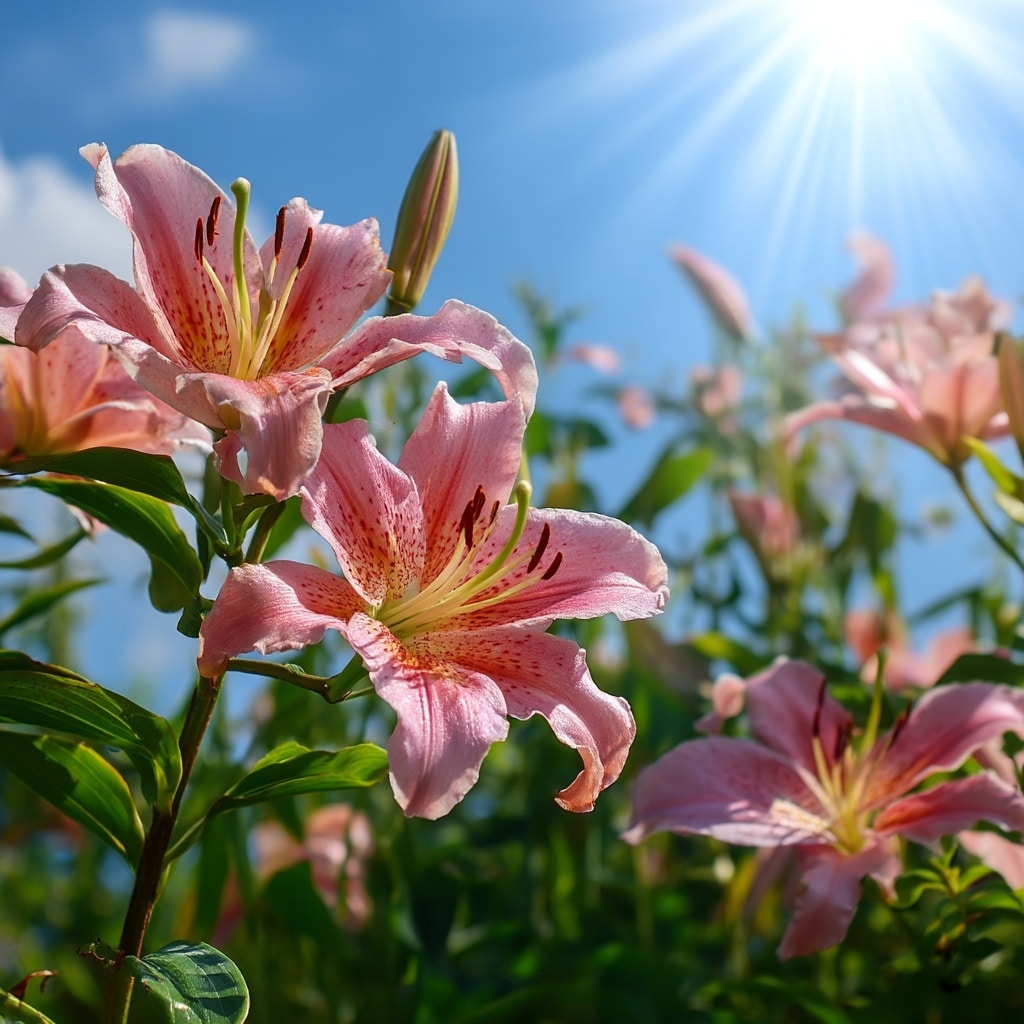
Lily flowers thrive in full sun and need six to eight hours of direct sunlight each day to produce strong stems and vivid blooms. Without enough light, your lilies may become leggy, lean toward the sun, or fail to flower at all.
If you’re planting outdoors, choose a spot that gets bright morning sun and some afternoon light. For warmer climates, a bit of afternoon shade can help prevent heat stress without compromising bloom quality.
Indoor lilies also need bright light. A sunny windowsill or spot near a grow light works best, especially during the spring and summer months. Keep in mind that too little light will result in fewer blooms and weaker stems.
Providing the right amount of sunlight ensures that lily flowers grow upright, develop large, colorful petals, and return reliably each season.
Water Requirements for Lily Flowers
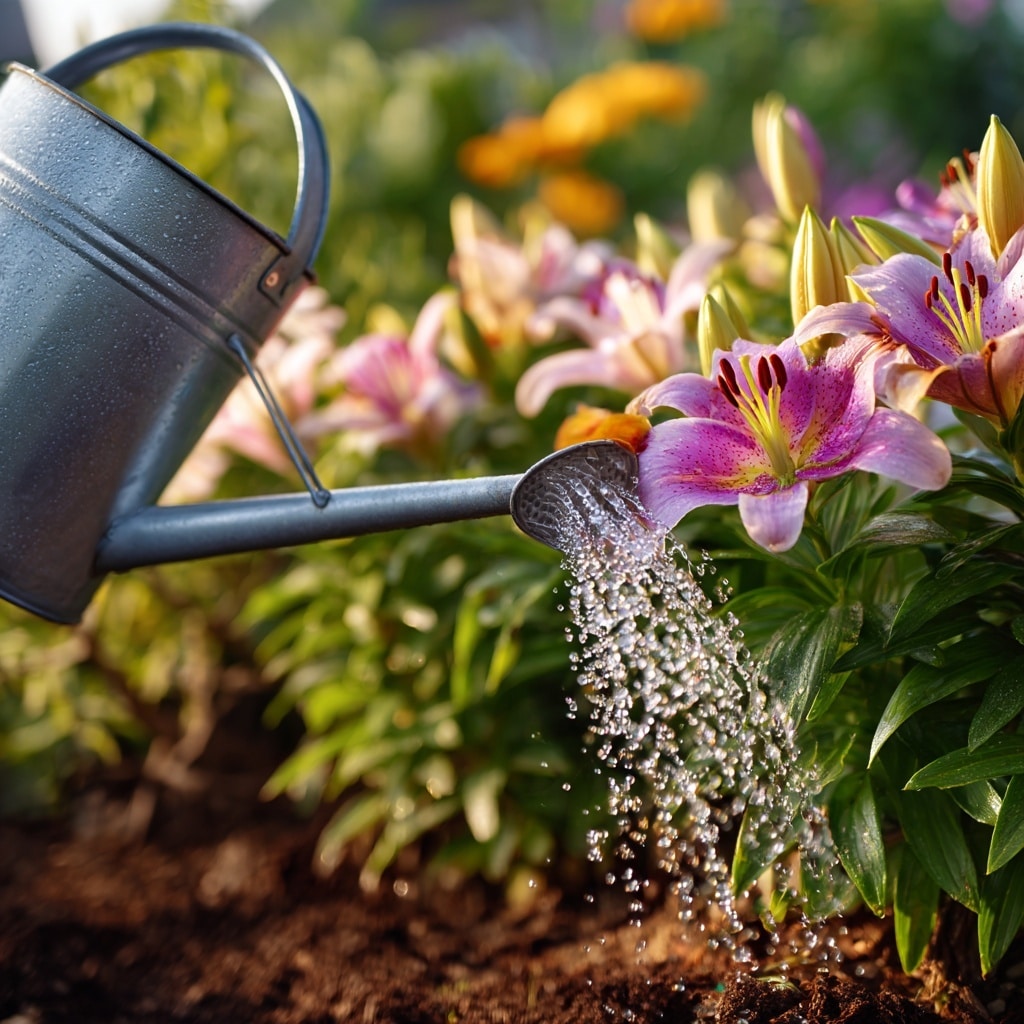
Proper watering is essential for healthy lily flowers, but finding the right balance is key. These plants need consistent moisture, especially during their active growing and blooming phases, but they don’t tolerate soggy soil.
As a general rule, water your lilies once a week, providing about one inch of water each time. In hotter, drier climates—or during long dry spells—you may need to increase frequency slightly. Always water at the base of the plant to keep the leaves dry and reduce the risk of fungal diseases.
Adding a layer of mulch around your lilies helps retain moisture and regulate soil temperature. It also reduces how often you need to water, particularly during summer heat.
Be cautious not to overwater. If the soil stays too wet, the bulbs may rot, especially in poorly drained garden beds or containers. To test soil moisture, stick your finger about two inches deep—if it feels dry, it’s time to water.
By keeping the soil evenly moist but not waterlogged, you’ll give your lily flowers the conditions they need to thrive and bloom beautifully.
Common Problems and Fixes for Lily Flowers
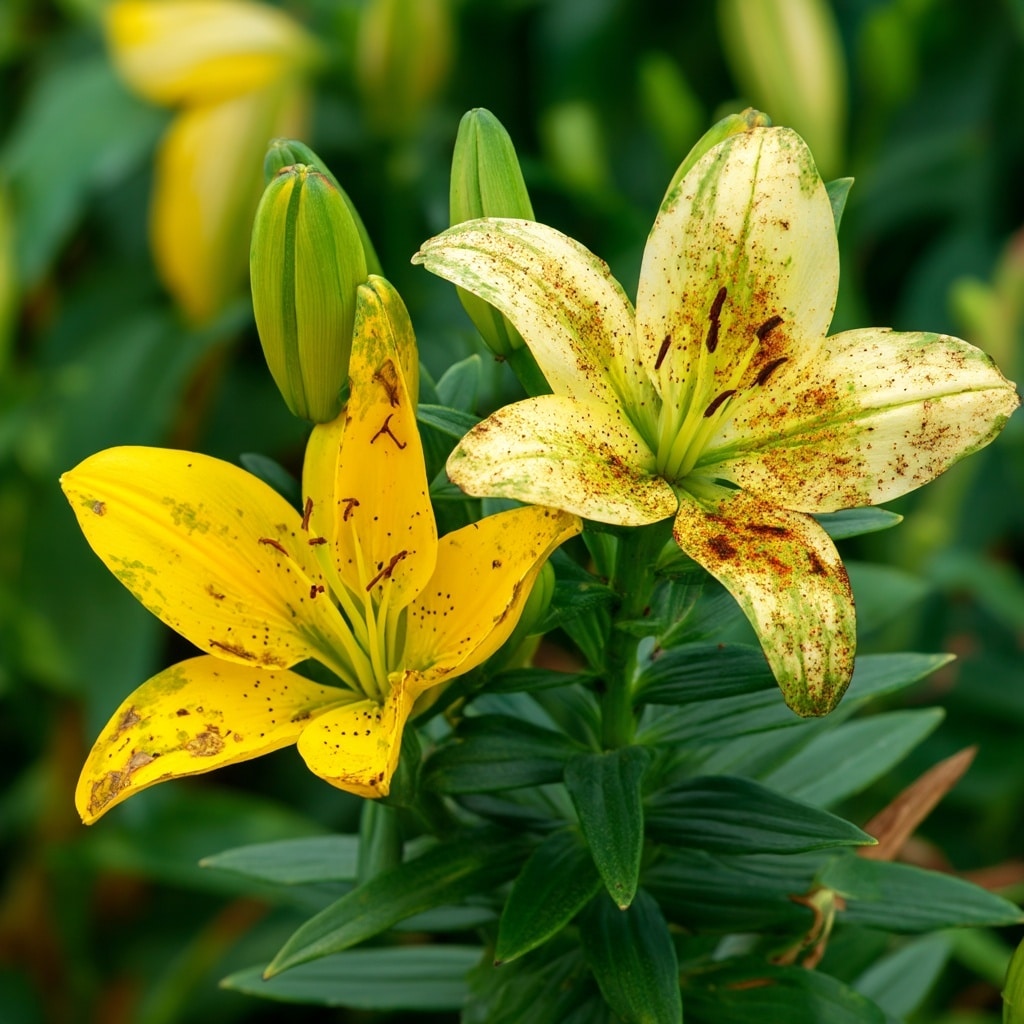
Even with the best care, lily flowers can run into a few problems. Luckily, most are easy to identify and fix with simple adjustments to your care routine.
Aphid Infestations
Aphids are one of the most common pests that affect lily plants. These tiny insects feed on sap and can weaken the plant or transmit disease. If you notice sticky residue on the leaves or see small bugs clustered on stems, it’s likely aphids. Spray them off with a strong stream of water or apply neem oil or an aphid-targeting insecticide.
Yellow or Browning Leaves
If your lily flowers start developing yellow or brown leaves, it could signal leaf scorch or improper watering. This issue is especially common indoors. Make sure your lilies are getting the right amount of light, water, and fertilizer—too much or too little of any of these can lead to stressed foliage.
Drooping or Bent Stems
Large blooms can get heavy, causing the stems to droop or bend, especially after rain or strong winds. Use stakes or support rings to keep your lilies upright. Staking early in the season helps prevent damage before it happens.
By keeping an eye out for these common issues and acting quickly, you can ensure that your lily flowers stay healthy and full of vibrant life all season long.
Types of Lily Flowers
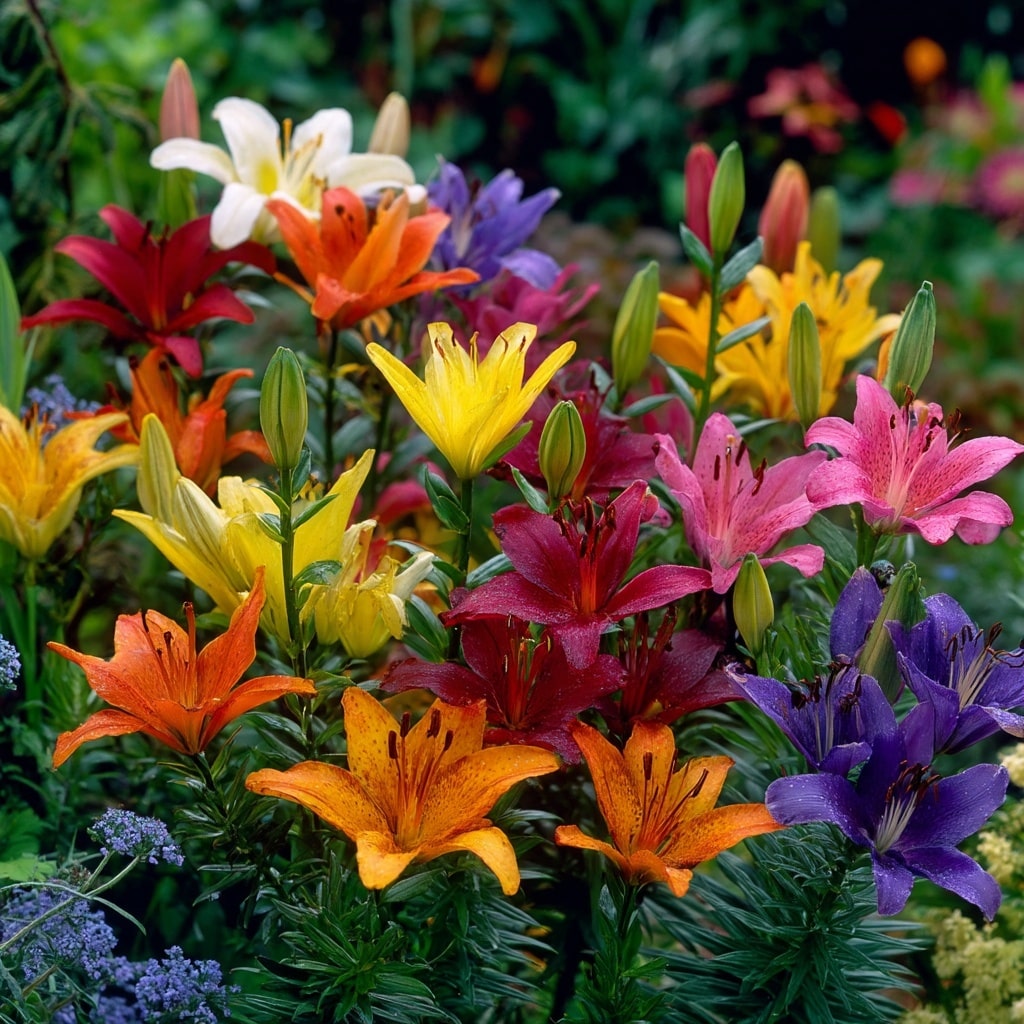
With so many varieties of lily flowers available, it can be hard to know where to begin. Each type has its own charm, bloom time, fragrance level, and growth habits. Here’s a breakdown of some of the most popular and garden-friendly options:
Asiatic Lilies
Perfect for beginners, Asiatic lilies are among the easiest to grow. They bloom early—often in late spring—and come in a wide range of colors, from soft pastels to bright oranges and reds. While they aren’t fragrant, they’re hardy and low-maintenance, making them ideal for borders or containers.
Oriental Lilies
Oriental lilies are loved for their bold, exotic blooms and sweet fragrance. They flower later in the season, usually midsummer to early fall, and often produce larger, more dramatic flowers than other types. Varieties like ‘Stargazer’ and ‘Casablanca’ are favorites for cut flower arrangements.
Easter Lilies (Lilium longiflorum)
Typically grown indoors around spring holidays, Easter lilies feature elegant white trumpet-shaped flowers. They can be planted outdoors in warmer climates after blooming. Just be sure to give them time to rest before replanting in the garden for future seasons.
Tiger Lilies
Tiger lilies are known for their eye-catching orange petals with dark spots. These tough plants can handle a wide range of conditions and tend to multiply year after year. Their downward-facing blooms and tall stems add a wild, natural look to the garden.
Trumpet Lilies
As the name suggests, trumpet lilies feature large, trumpet-shaped flowers and a rich fragrance. These blooms often appear mid to late summer and grow on tall, sturdy stems. Their blooms are long-lasting and come in creamy whites, soft yellows, and pale pinks.
Turk’s Cap Lilies
One of the most unique-looking lily flowers, Turk’s cap lilies have strongly reflexed petals that curl backward, giving them an almost inside-out appearance. These wildflower-like lilies thrive in moist, rich soil and can reach heights of up to eight feet. They’re also excellent for attracting hummingbirds and butterflies.
Frequently Asked Questions About Lily Flowers

Are all plants with “lily” in the name true lilies?
No—many plants with “lily” in the name aren’t actually true lily flowers. True lilies belong to the Lilium genus and grow from bulbs. In contrast, plants like daylilies, peace lilies, and lily of the valley are from entirely different plant families. One easy way to tell? True lilies have long-lasting blooms, while daylily flowers typically last just one day.
Can Easter lilies be planted outside?
Yes! Once your indoor Easter lilies have finished blooming, you can plant them outdoors in spring. Trim back the plant and replant it in a sunny, well-drained area of your garden. With proper care, Easter lily flowers can adapt to outdoor life and rebloom in the summer.
Do lilies need to be dug up every year?
Most lily flowers are perennials and don’t need to be dug up annually. However, in colder zones, applying mulch before winter can help protect the bulbs. If you notice your lilies becoming overcrowded or not blooming as much, lifting and dividing the bulbs every few years can rejuvenate growth.
Do lilies attract pollinators?
Absolutely. Many types of lily flowers—especially Oriental and Turk’s Cap lilies—are highly attractive to bees, butterflies, and hummingbirds. Their vibrant colors and sweet fragrance make them a favorite among garden pollinators.
Conclusion
With the right planting techniques, consistent care, and a bit of seasonal maintenance, lily flowers can become the showstoppers of your garden year after year. Whether you prefer the fragrance of Oriental varieties or the reliability of Asiatics, these perennials are both beautiful and rewarding. Give them sun, water, and attention—and they’ll keep blooming with elegance and grace every season.

